
Sinularia flexibilis finger leather soft coral, Fiji.
Species: Sinularia soft coral, Sinularis flexibilis
Location: Namena Marine Reserve, Namena Island, Fiji
Image ID: 31326
Species: Sinularia soft coral, Sinularis flexibilis
Location: Namena Marine Reserve, Namena Island, Fiji
Image ID: 31326

Symphyllia brain coral on tropical coral reef, Fiji.
Species: Brain coral, Symphyllia
Location: Vatu I Ra Passage, Bligh Waters, Viti Levu Island, Fiji
Image ID: 31327
Species: Brain coral, Symphyllia
Location: Vatu I Ra Passage, Bligh Waters, Viti Levu Island, Fiji
Image ID: 31327

Beautiful tropical reef in Fiji. The reef is covered with dendronephthya soft corals and sea fan gorgonians, with schooling Anthias fishes swimming against a strong current.
Species: Anthias, Dendronephthya soft coral, Gorgonian, Dendronephthya, Gorgonacea, Pseudanthias
Location: Gau Island, Lomaiviti Archipelago, Fiji
Image ID: 31328
Species: Anthias, Dendronephthya soft coral, Gorgonian, Dendronephthya, Gorgonacea, Pseudanthias
Location: Gau Island, Lomaiviti Archipelago, Fiji
Image ID: 31328

Acropora table coral on pristine tropical reef. Table coral competes for space on the coral reef by growing above and spreading over other coral species keeping them from receiving sunlight.
Location: Vatu I Ra Passage, Bligh Waters, Viti Levu Island, Fiji
Image ID: 31331
Location: Vatu I Ra Passage, Bligh Waters, Viti Levu Island, Fiji
Image ID: 31331

Red whip coral, Ellisella ceratophyta, Mount Mutiny, Bligh Waters, Fiji.
Species: Gorgonian, Whip coral, Ellisella ceratophyta, Gorgonacea
Location: Vatu I Ra Passage, Bligh Waters, Viti Levu Island, Fiji
Image ID: 31332
Species: Gorgonian, Whip coral, Ellisella ceratophyta, Gorgonacea
Location: Vatu I Ra Passage, Bligh Waters, Viti Levu Island, Fiji
Image ID: 31332
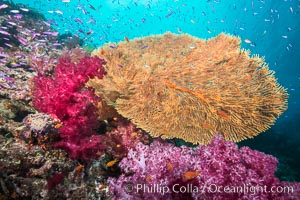
Sea fan or gorgonian on coral reef. This gorgonian is a type of colonial alcyonacea soft coral that filters plankton from passing ocean currents.
Species: Dendronephthya soft coral, Gorgonian, Dendronephthya, Gorgonacea
Location: Gau Island, Lomaiviti Archipelago, Fiji
Image ID: 31333
Species: Dendronephthya soft coral, Gorgonian, Dendronephthya, Gorgonacea
Location: Gau Island, Lomaiviti Archipelago, Fiji
Image ID: 31333

Colorful Dendronephthya Soft Corals and Black Coral, Fiji.
Species: Dendronephthya soft coral, Dendronephthya
Location: Nigali Passage, Gau Island, Lomaiviti Archipelago, Fiji
Image ID: 31334
Species: Dendronephthya soft coral, Dendronephthya
Location: Nigali Passage, Gau Island, Lomaiviti Archipelago, Fiji
Image ID: 31334

Spectacularly colorful dendronephthya soft corals on South Pacific reef, reaching out into strong ocean currents to capture passing planktonic food, Fiji.
Species: Dendronephthya soft coral, Dendronephthya
Location: Nigali Passage, Gau Island, Lomaiviti Archipelago, Fiji
Image ID: 31335
Species: Dendronephthya soft coral, Dendronephthya
Location: Nigali Passage, Gau Island, Lomaiviti Archipelago, Fiji
Image ID: 31335

Spectacular display of pristine cabbage coral, Turbinaria reniformis, in Nigali Pass on Gao Island, Fiji.
Species: Cabbage coral, Tubinaria reniformis, Cabbage coral, Turbinaria reniformis
Location: Nigali Passage, Gau Island, Lomaiviti Archipelago, Fiji
Image ID: 31336
Species: Cabbage coral, Tubinaria reniformis, Cabbage coral, Turbinaria reniformis
Location: Nigali Passage, Gau Island, Lomaiviti Archipelago, Fiji
Image ID: 31336
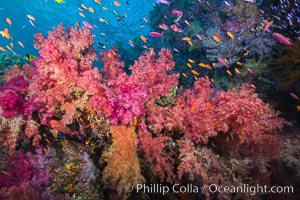
Dendronephthya soft corals and schooling Anthias fishes, feeding on plankton in strong ocean currents over a pristine coral reef. Fiji is known as the soft coral capitlal of the world.
Species: Anthias, Dendronephthya soft coral, Dendronephthya, Pseudanthias
Location: Namena Marine Reserve, Namena Island, Fiji
Image ID: 31338
Species: Anthias, Dendronephthya soft coral, Dendronephthya, Pseudanthias
Location: Namena Marine Reserve, Namena Island, Fiji
Image ID: 31338

Pristine South Pacific tropical coral reef, with vibrant colorful dendronephthya soft corals, crinoids and schooling Anthias fishes, pulsing with life in a strong current. Fiji is known as the soft coral capitlal of the world.
Species: Anthias, Crinoid feather star, Dendronephthya soft coral, Crinoidea, Dendronephthya, Pseudanthias
Location: Namena Marine Reserve, Namena Island, Fiji
Image ID: 31339
Species: Anthias, Crinoid feather star, Dendronephthya soft coral, Crinoidea, Dendronephthya, Pseudanthias
Location: Namena Marine Reserve, Namena Island, Fiji
Image ID: 31339

Dendronephthya soft corals and schooling Anthias fishes, feeding on plankton in strong ocean currents over a pristine coral reef. Fiji is known as the soft coral capitlal of the world.
Species: Anthias, Dendronephthya soft coral, Dendronephthya, Pseudanthias
Location: Fiji
Image ID: 31340
Species: Anthias, Dendronephthya soft coral, Dendronephthya, Pseudanthias
Location: Fiji
Image ID: 31340

Beautiful South Pacific coral reef, with gorgonian sea fans, schooling anthias fish and colorful dendronephthya soft corals, Fiji.
Species: Anthias, Dendronephthya soft coral, Gorgonian, Dendronephthya, Gorgonacea, Pseudanthias
Location: Fiji
Image ID: 31341
Species: Anthias, Dendronephthya soft coral, Gorgonian, Dendronephthya, Gorgonacea, Pseudanthias
Location: Fiji
Image ID: 31341

Soft Corals and Diver in Cavern, Fiji.
Species: Dendronephthya soft coral, Dendronephthya
Location: Vatu I Ra Passage, Bligh Waters, Viti Levu Island, Fiji
Image ID: 31372
Species: Dendronephthya soft coral, Dendronephthya
Location: Vatu I Ra Passage, Bligh Waters, Viti Levu Island, Fiji
Image ID: 31372

Aerial View of Namena Island, Fiji.
Location: Namena Marine Reserve, Namena Island, Fiji
Image ID: 34685
Location: Namena Marine Reserve, Namena Island, Fiji
Image ID: 34685
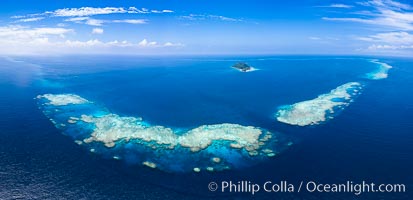
Aerial View of Namena Marine Reserve and Coral Reefs, Namena Island, Fiji.
Location: Namena Marine Reserve, Namena Island, Fiji
Image ID: 34686
Panorama dimensions: 5617 x 11605
Location: Namena Marine Reserve, Namena Island, Fiji
Image ID: 34686
Panorama dimensions: 5617 x 11605

Aerial photo of gray whale calf and mother. This baby gray whale was born during the southern migration, far to the north of the Mexican lagoons of Baja California where most gray whale births take place.
Species: Gray whale, Eschrichtius robustus
Location: San Clemente, California
Image ID: 29017
Species: Gray whale, Eschrichtius robustus
Location: San Clemente, California
Image ID: 29017

California sea lion, underwater at Santa Barbara Island. Santa Barbara Island, 38 miles off the coast of southern California, is part of the Channel Islands National Marine Sanctuary and Channel Islands National Park. It is home to a large population of sea lions.
Species: California sea lion, Zalophus californianus
Location: Santa Barbara Island, California
Image ID: 23418
Species: California sea lion, Zalophus californianus
Location: Santa Barbara Island, California
Image ID: 23418

North Pacific humpback whale showing extensive scarring, almost certainly from a boat propeller, on dorsal ridge. This female North Pacific humpback whale was first seen with the depicted lacerations near the island of Maui in the Hawaiian Islands in the mid-90s, and is the original humpback to bear the name 'Blade Runner'. This female has apparently recovered, as evidenced the calf she was observed nurturing. A South Pacific humpback whale endured a similar injury in Sydney Australia in 2001, and bears a remarkably similar scar pattern to the above-pictured whale.
Species: Humpback whale, Megaptera novaeangliae
Location: Maui, Hawaii
Image ID: 05909
Species: Humpback whale, Megaptera novaeangliae
Location: Maui, Hawaii
Image ID: 05909

Torrey Pines Golf Course over looking Blacks Beach and the Pacific Ocean, south course, summer, afternoon.
Location: Torrey Pines Golf Course, San Diego, California
Image ID: 38050
Location: Torrey Pines Golf Course, San Diego, California
Image ID: 38050
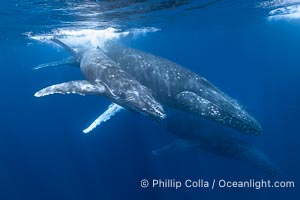
Mother, Calf and Escort South Pacific Humpback Whales Underwater, Moorea, French Polynesia.
Species: Humpback whale, Megaptera novaeangliae
Location: Moorea, French Polynesia, France
Image ID: 40679
Species: Humpback whale, Megaptera novaeangliae
Location: Moorea, French Polynesia, France
Image ID: 40679

Beautiful South Pacific coral reef, with gorgonian sea fans, schooling anthias fish and colorful dendronephthya soft corals, Fiji.
Species: Anthias, Dendronephthya soft coral, Gorgonian, Dendronephthya, Gorgonacea, Pseudanthias
Location: Vatu I Ra Passage, Bligh Waters, Viti Levu Island, Fiji
Image ID: 31330
Species: Anthias, Dendronephthya soft coral, Gorgonian, Dendronephthya, Gorgonacea, Pseudanthias
Location: Vatu I Ra Passage, Bligh Waters, Viti Levu Island, Fiji
Image ID: 31330
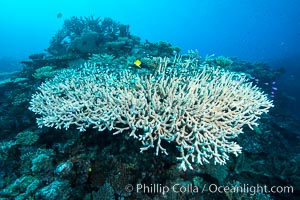
Staghorn coral on pristine Fijian coral reef.
Species: Staghorn coral, Acropora palifera
Location: Wakaya Island, Lomaiviti Archipelago, Fiji
Image ID: 31394
Species: Staghorn coral, Acropora palifera
Location: Wakaya Island, Lomaiviti Archipelago, Fiji
Image ID: 31394

California sea lions, underwater at Santa Barbara Island. Santa Barbara Island, 38 miles off the coast of southern California, is part of the Channel Islands National Marine Sanctuary and Channel Islands National Park. It is home to a large population of sea lions.
Species: California sea lion, Zalophus californianus
Location: Santa Barbara Island, California
Image ID: 23429
Species: California sea lion, Zalophus californianus
Location: Santa Barbara Island, California
Image ID: 23429

Brain and staghorn corals on pristine Fijian coral reef.
Species: Brain coral, Staghorn coral, Acropora palifera, Symphyllia
Location: Fiji
Image ID: 31434
Species: Brain coral, Staghorn coral, Acropora palifera, Symphyllia
Location: Fiji
Image ID: 31434
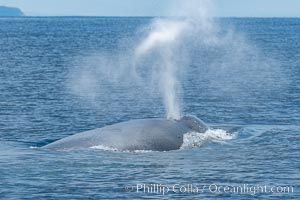
Blue whale, exhaling in a huge blow as it swims at the surface between deep dives. The blue whale's blow is a combination of water spray from around its blowhole and condensation from its warm breath.
Species: Blue whale, Balaenoptera musculus
Location: San Diego, California
Image ID: 34560
Species: Blue whale, Balaenoptera musculus
Location: San Diego, California
Image ID: 34560
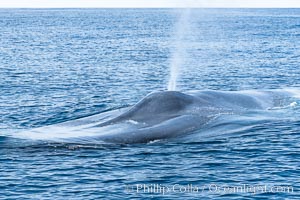
Blue whale, exhaling in a huge blow as it swims at the surface between deep dives. The blue whale's blow is a combination of water spray from around its blowhole and condensation from its warm breath.
Species: Blue whale, Balaenoptera musculus
Location: San Diego, California
Image ID: 34564
Species: Blue whale, Balaenoptera musculus
Location: San Diego, California
Image ID: 34564
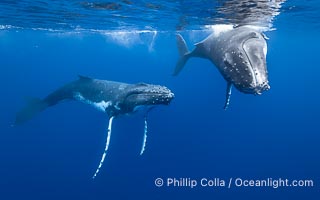
South Pacific Humpback Whales Underwater, Moorea, French Polynesia.
Species: Humpback whale, Megaptera novaeangliae
Location: Moorea, French Polynesia, France
Image ID: 40661
Species: Humpback whale, Megaptera novaeangliae
Location: Moorea, French Polynesia, France
Image ID: 40661

Branching whip coral (Ellisella sp.) captures passing planktonic food in ocean currents, Fiji.
Species: Branching whip coral, Ellisella
Location: Vatu I Ra Passage, Bligh Waters, Viti Levu Island, Fiji
Image ID: 31345
Species: Branching whip coral, Ellisella
Location: Vatu I Ra Passage, Bligh Waters, Viti Levu Island, Fiji
Image ID: 31345
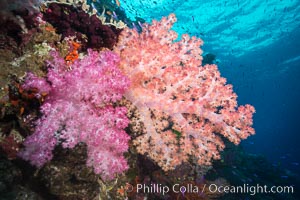
Spectacularly colorful dendronephthya soft corals on South Pacific reef, reaching out into strong ocean currents to capture passing planktonic food, Fiji.
Species: Dendronephthya soft coral, Dendronephthya
Location: Namena Marine Reserve, Namena Island, Fiji
Image ID: 31353
Species: Dendronephthya soft coral, Dendronephthya
Location: Namena Marine Reserve, Namena Island, Fiji
Image ID: 31353